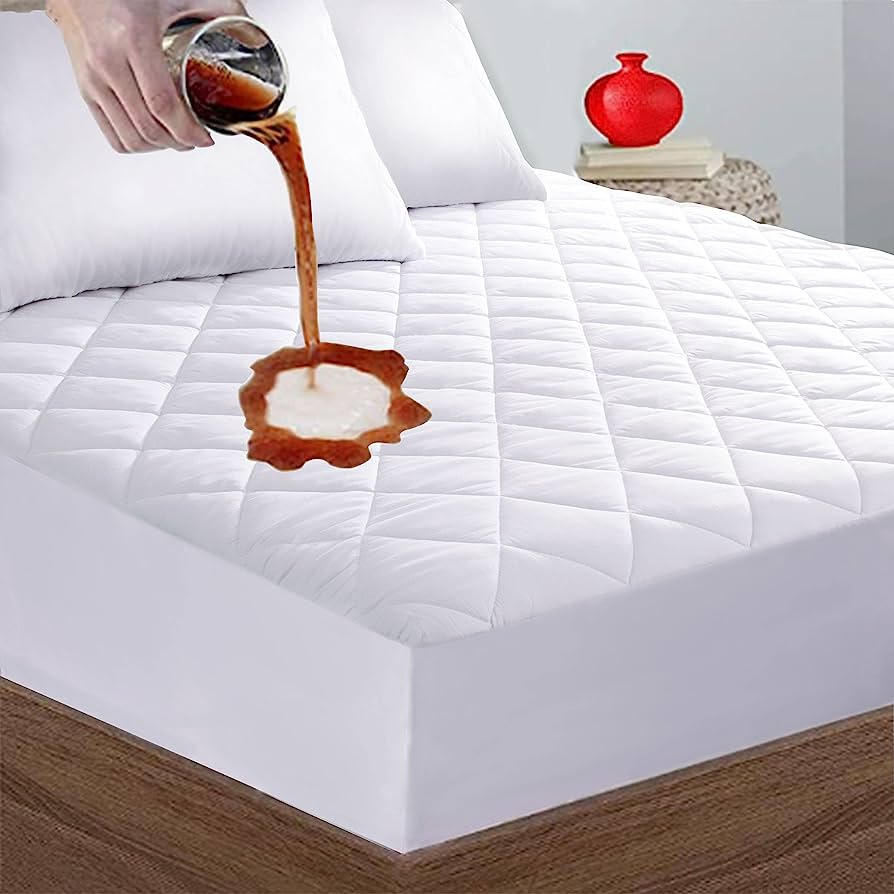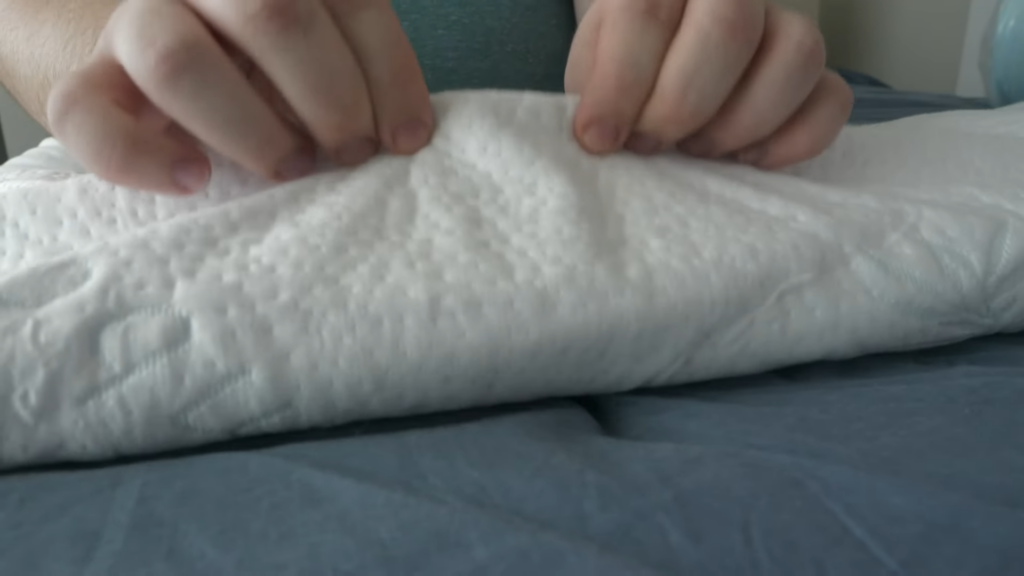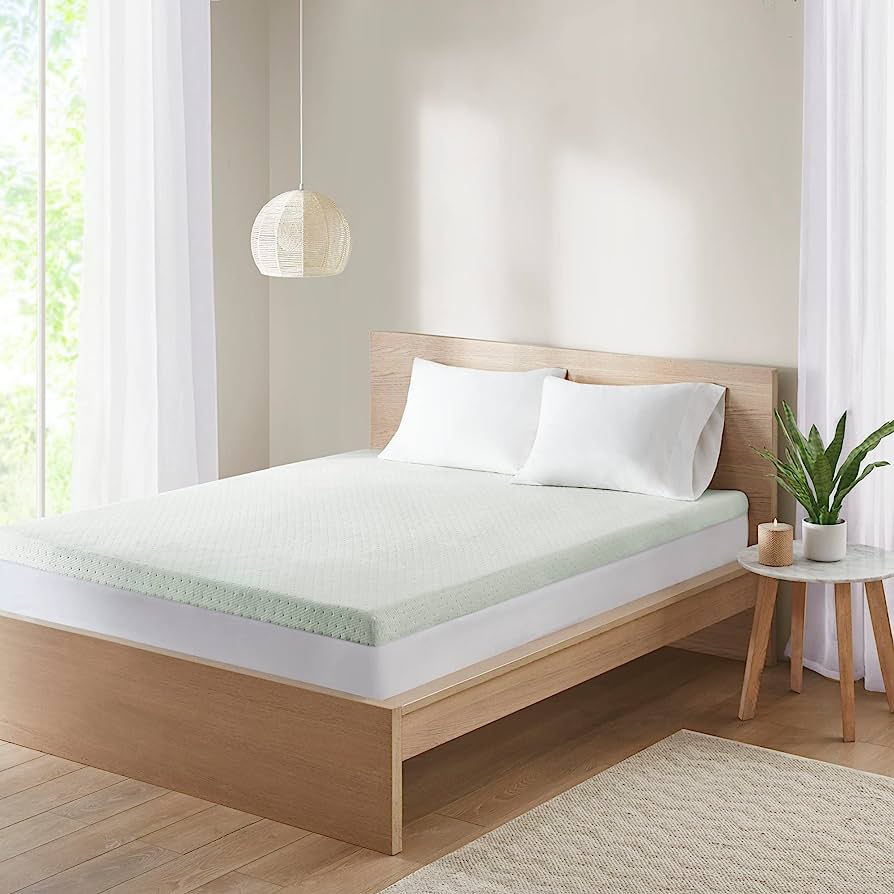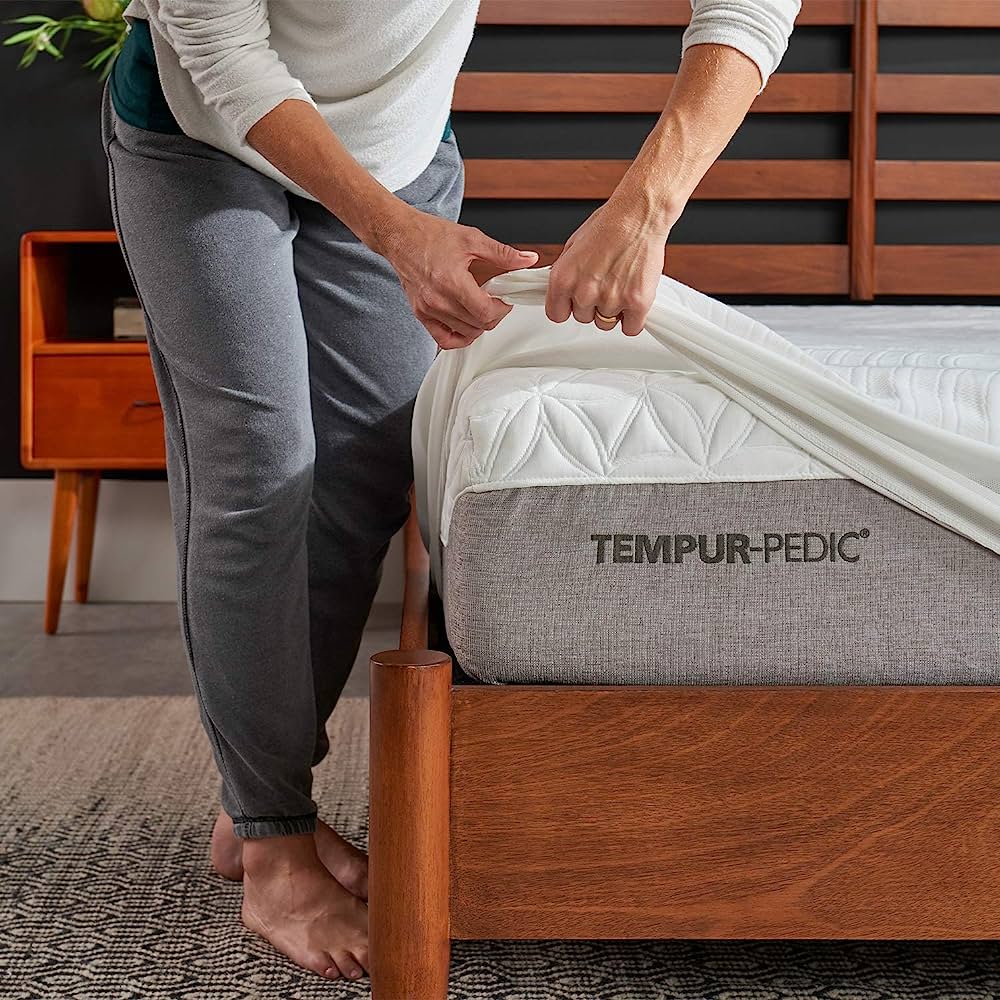Good sleep is crucial to our overall health, and believe it or not, it’s often dictated by what lies beneath us during those peaceful hours – our mattress, mattress pads, and mattress protectors.
These bedding essentials, though commonly overlooked, are the silent heroes of a good night’s rest. This article will delve into the necessity of a mattress pad and protector, and their impact on our sleep quality and hygiene.
Do You Really Need A Mattress Pad or Protector?
Based on my hands-on experience with an extensive range of mattress pads and protectors, I’ve come to understand their true value and significance in not only enhancing the quality of sleep, but also maintaining the health and longevity of the mattress. I’ve personally felt the added comfort and support provided by mattress pads, which noticeably relieved pressure points and improved our overall sleep experience.
Understanding Basic Bedding Terminology
Understanding the basic bedding jargon is the foundation for improving our sleep environment. Key terms include:
- Mattress: The core bedding component providing support and comfort for sleepers.
- A Mattress Pad: An additional layer offering extra cushioning and comfort to the mattress.
- Mattress Protector: A removable layer designed to shield the mattress from allergens, dust mites, and spills.
- Topper: Like a mattress pad, but typically thicker and used to significantly change the firmness of a mattress.
Deep Dive into Mattress Pads
A mattress pad is more than a simple bedding accessory. It’s an investment in comfort, mattress longevity, and better sleep.
Benefits of Using a Mattress Pad
- Additional Softness and Support: Mattress pads add extra cushioning, making your bed softer and more comfortable to sleep on. They can also help relieve pressure points for a better night’s rest.
- Enhanced Mattress Longevity: Mattress pads act as a protective layer, minimizing wear and tear on your mattress and extending its lifespan by preventing direct contact with body oils and stains.
- Protection Against Allergens: Many mattress pads have hypoallergenic properties that create a barrier against allergens and dust mites, benefiting those with allergies or sensitivities.
Types of Mattress Pads
- Cotton: Breathable and soft, providing a natural feel with good moisture-wicking properties.
- Wool: Naturally temperature-regulating, hypoallergenic, and resistant to dust mites.
- Latex: Offers supportive and contouring properties, naturally resistant to dust mites.
- Memory Foam: Conforms to your body, relieves pressure points, and promotes better spinal alignment.
Choosing a Mattress Pad
The selection largely depends on personal preference. Factors like material, thickness, size, durability, ease of cleaning, and price should be considered.
Deep Dive into Mattress Protectors
A mattress protector, while often mistaken for a mattress pad, serves a different yet equally important purpose – protection.
Benefits of Using a Mattress Protector
- Spill and Stain Protection: A mattress protector acts as a barrier, preventing spills, stains, and accidents from reaching the mattress. This is particularly beneficial for protecting against liquid spills, bedwetting, or accidental food and beverage stains.
- Dust Mite and Allergen Resistance: Mattress protectors with hypoallergenic properties create a shield against dust mites, bed bugs, pet dander, and other allergens. This helps reduce allergic reactions and provides a cleaner sleep environment.
- Bed Bug Prevention: Some mattress protectors are designed to be bed bug-resistant, minimizing the chances of infestations and offering peace of mind, especially for those living in areas prone to bed bug problems.
- Maintaining Mattress Warranty: Many mattress warranties require the use of a mattress protector to keep the mattress in good condition and protect against damage. Using a protector can ensure the validity of your warranty.
Types of mattress protectors
- Waterproof: These protectors have a waterproof layer that safeguards the mattress from liquid spills and stains, making them ideal for families with young children or pets.
- Hypoallergenic: Hypoallergenic mattress protectors create a barrier against allergens, making them suitable for allergy sufferers or individuals with asthma.
- Temperature-Regulating: Some protectors are designed with materials that promote airflow and temperature regulation, providing a cooler sleep environment, especially for hot sleepers.
- Combination Protectors: Certain mattress protectors offer a combination of features, such as being both waterproof and hypoallergenic, catering to multiple needs simultaneously.
Choosing a Mattress Protector
- Bed Size: Ensure the protector is the right size for your mattress, fitting snugly without bunching or slipping.
- Type of Protection Needed: Assess your specific needs, such as waterproofing for protection against spills or hypoallergenic properties for allergy relief.
- Comfort: Choose a protector with a soft and breathable surface, so it doesn’t compromise the comfort of your mattress.
- Breathability: Look for a protector with good airflow to prevent heat buildup during sleep.
- Ease of Washing: Select a mattress protector that is easy to remove and machine washable to maintain hygiene and freshness.
Comparing Mattress Pads and Mattress Protectors
While they serve different purposes, pads and protectors work together to enhance your sleep experience. The protector shields your mattress from unwanted substances, and the pad adds a comfort layer. It’s not an either-or situation; both can be used concurrently for maximum benefit.
Mattress Protectors and Allergens
A mattress protector is a formidable barrier against allergens. Dust mites and bed bugs, common allergy triggers, are prevented from infiltrating your mattress with the use of a protector.
A mattress protector with hypoallergenic properties creates an impermeable layer that prevents dust mites from infiltrating the mattress, effectively reducing exposure and minimizing the risk of allergic reactions.
Special Considerations for Mattress Protectors
Waterproof protectors are a valuable option, especially for households with children. Accidents and spills are not uncommon, and they can quickly seep into the mattress, causing stains, odors, and potential damage.
A waterproof protector creates a reliable barrier that effectively prevents liquids from reaching the mattress surface.
Additionally, waterproof mattress protectors are beneficial for individuals who may suffer from night sweats or other perspiration issues.
Sweating during sleep is a natural process, but it can also lead to moisture buildup in the mattress. A waterproof protector helps wick away moisture, keeping the mattress dry and maintaining a hygienic sleep environment.
The Role of Mattress Pads and Protectors in Sleep Quality
A high-quality mattress pad is designed to add an extra layer of comfort and support to your mattress, creating a more pleasant sleeping surface.
By offering additional cushioning, the mattress pad can alleviate pressure points and provide a softer, more luxurious feel. This enhanced comfort can lead to better sleep quality, as you are less likely to experience discomfort or disturbances during the night, allowing you to rest more soundly.
On the other hand, a mattress protector plays a vital role in maintaining a clean and healthy sleep environment. It acts as a protective barrier, preventing spills, stains, and the accumulation of dust mites, allergens, and bed bugs on the mattress surface.
Dust mites and allergens, in particular, can trigger allergies and respiratory issues, leading to disrupted sleep and discomfort. By keeping these potential allergens at bay, the mattress protector indirectly contributes to better sleep by creating a cleaner and healthier sleeping environment.
When you combine the benefits of both a mattress pad and a mattress protector, you get a sleep-enhancing duo.
The Impact on Mattress Lifespan
By shielding the mattress from potential damage, both protectors and pads extend the life of a mattress. Preventing wear and tear helps maintain the mattress’s overall quality, ensuring it remains supportive and comfortable for a more extended period.
As a result, you can delay the need for replacing your mattress, saving money on frequent replacements. Additionally, by reducing the frequency of mattress disposal, you contribute to a more sustainable environment by minimizing waste and the environmental impact of mattress manufacturing and disposal processes.
Popular Mattress and Bedding Brands
There’s an array of brands offering quality mattress pads and protectors. Some top-rated ones include Tempur-Pedic, Purple, and Helix. Each offers a unique blend of comfort, protection, and durability, catering to a variety of consumer needs.
Conclusion
In conclusion, a mattress pad and protector are not just accessories, they are essentials. They contribute significantly to the comfort, hygiene, and longevity of your bedding, ultimately enhancing the quality of your sleep. Investing in a good mattress pad and protector is not just investing in your bed; it’s investing in your health.
In the realm of bedding, these silent caretakers make a loud impact. Your sleep matters – give it the care it deserves.
Frequently Asked Questions
Are mattress pads and protectors the same thing?
No, mattress pads and protectors serve different purposes. A mattress pad adds an extra comfort and cushioning to the mattress, while a mattress protector acts as a barrier to shield the mattress from spills, stains, allergens, and dust mites.
Can mattress pads be washed?
Yes, most mattress pads are machine washable. It’s essential to follow the care instructions provided by the manufacturer to maintain the pad’s quality and prolong its lifespan.
Do mattress protectors make the bed hot?
Not all mattress protectors cause heat buildup. Some protectors are designed with breathable materials and temperature-regulating properties, ensuring a cooler sleep environment.
Do I need both a mattress pad and protector?
Using both a mattress pad and protector can be beneficial. The protector safeguards the mattress, while the pad enhances comfort, ultimately contributing to a better sleep experience.
How often should I replace my mattress pad or protector?
The lifespan of mattress pads and protectors varies depending on their quality and usage. On average, it’s recommended to replace them every two to five years or when signs of wear and tear become apparent.



